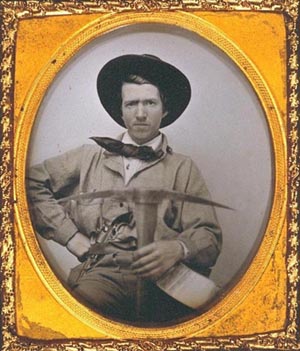

Although gold is found in many areas in California, the most productive districts are in the northern and central portions of the Sierra, Nevada. The primary deposits usually consist of gold-quartz veins in metamorphic rocks and are associated with the intrusion of the Sierra Nevada batholith.

The Basin Ranges and Mojave Desert provinces of eastern and Southern California has yielded substantial amounts of gold. The gold occurs either in epithermal deposits in brecciated silicified zones of Tertiary volcanic rocks or in mesothermal quartz veins of older metamorphic and granitic rocks. Gold also has been recovered from dry placers in several districts.
